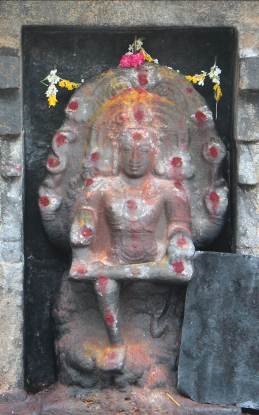Letters from Sri Ramanasramam
VOLUMES I, II
&
Letters from and Recollections of Sri Ramanasramam
By SURI NAGAMMA

Translated by
D. S. SASTRI
Sri Ramanasramam
Tiruvannamalai
2006
THE ATTITUDE OF SILENCE
I went to Bhagavan’s sannidhi (presence) at 3 o’clock this afternoon and joined the group of people around him in their discussions. Bhagavan casually remarked that Adi Sankara wrote “Dakshinamurthy Stotram”1 in three parts and said, “Sri Sankara felt like singing in praise of Sri Dakshinamurthy but then, Dakshinamurthy being the embodiment of silence, the problem was how to describe silence. He therefore analysed the three attributes of silence, namely, Srishti (creation) Sthithi (preservation) and Laya (dissolution) and thus offered his salutations to Dakshinamurthy. Dakshinamurthy is the embodiment of these three attributes which do not have any discernible characteristics or distinguishing marks. How else can silence be eulogised?”
1 Dakshinamurthy is Siva incarnate as a youth, teaching in Silence. Bhagavan has been identified with Dakshinamurthy.
Taking up the thread of the conversation a devotee said, “Dandapani Swami told us several years back that on a Mahasivarathri 2 day, devotees gathered around Bhagavan saying, ‘Bhagavan must explain to us today the meaning of “Dakshinamurthy Ashtakam” (Eight Slokas in Praise of Dakshinamurthy). Bhagavan however, sat in silence, smiling. After waiting for some time the devotees went away feeling that, by his continued silence, Bhagavan had taught them that silence alone was the true meaning of those slokas. Is that a fact?”
Bhagavan (with a smile): “Yes. That is true.”
I (with some surprise): “So that means Bhagavan gave a silent commentary?”
Bhagavan: “Yes. It was a silent commentary.” Another devotee: “Mouna means abiding in the Self, isn’t it?”
Bhagavan: “Yes. That is so. Without abiding in the Self, how could it be mouna (silence)?”
Devotee: “That is just what I am asking. Would it be mouna if one were to completely refrain from speech without at the same time having an awareness of the Self and abiding therein?”
2 Great Night of Siva (in February each year).
Bhagavan: “How could real mouna be achieved? Some people say that they are observing mouna by keeping their mouths shut but at the same time they go on writing something or other on bits of paper or on a slate. Is not that another form of activity of the mind?”
Another devotee: “Is there then no benefit at all in refraining from speech?”
Bhagavan: “A person may refrain from speech in order to avoid the obstacles of the outer world, but he should not consider that to be an end in itself. True Silence is really endless speech; there is no such thing as attaining it because it is always present. All you have to do is to remove the worldly cobwebs that enshroud it; there is no question of attaining it.”
While we were thus engaged in discussions, someone said that a broadcasting company was thinking of recording Bhagavan’s voice. Bhagavan laughed and said, “Oho! You don’t say so! But my voice is Silence, isn’t it? How can they record Silence? That which Is, is Silence. Who could record it?”
The devotees sat quiet, exchanging glances and there was absolute silence in the hall. Bhagavan, the embodiment of Dakshinamurthy, sat in the Attitude of Silence (mouna mudra) facing southwards.3 That living image, his body, was radiant with the Light of the Self. Today is indeed a memorable day
3 One meaning of the name Dakshinamurthy is ‘The Southward facing’. The Guru (teacher) is the spiritual North Pole and, therefore, traditionally faces south.
Note:

Dakshinamurti – The Guru who taught through Silent eloquence
The benign form of Dakshinamurti is described by Sankara in two stanzas of his Dakshinamurti stotra. At one instance, he expresses awe and paints the verbal picture as: calling it strange that under the banyan tree were the aged disciples around the youthful guru! He taught them with “silence” but doubts of the disciples were all dispelled. In yet another hymn Shankara states that he worships Dakshinamurti who is a young guru, teaching the knowledge of Brahman through silence to the rishis and scholars in the Veda-s, who is the teacher of teachers, whose hand is held in the “sign of knowledge”, whose nature is bliss who ever revels in His own Self, and who is ever silent. This uniqueness of Dakshinamurty who imparts the knowledge of the Brahman to the rishis without a single spoken word becomes an important characteristic of the iconography and poses as a challenge to the artist to paint and sculpt the image of Dakshinamurti potent with knowledge but imparting in silence.